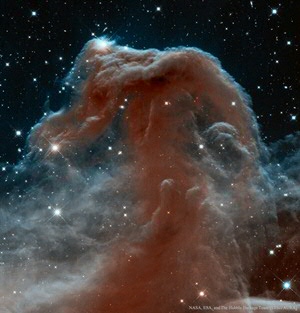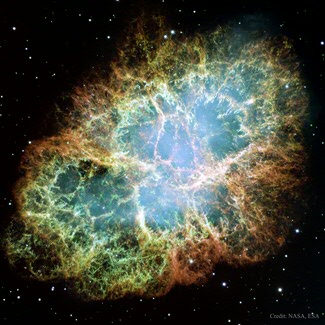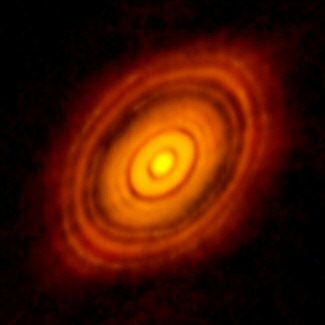Planet & Star Formation and Interstellar Medium
All stars and planets, throughout the history of the universe, are formed from gas and dust. This gas and dust are ubiquitous in galaxies and known as interstellar matter (ISM). At the densest locations star and planet formation (SPF) occurs. The gas comprises atomic hydrogen and helium, as well as molecules like carbon-monoxide, water, methane, and many more. The dust consists of small silicate particles ("sand") and carbonaceous material ("soot"), and forms the material from which planets like Earth are formed.

The Kapteyn Institute has developed a strong profile in research on the the formation of planets & stars and the interstellar medium. Some of the key questions that drive current research at Kapteyn in the area of "Planet & Star Formation and Interstellar Medium" include:
- What is the origin of the diversity of stellar masses?
- How do young stars affect their surroundings and influence future star formation?
- What is the organic and water content of planet-forming disks?
- What are the properties of the first stars in the universe?
- How do dust grains influence the chemical composition of interstellar matter?
Some of the projects, programs and instruments in galaxy research in which the institute is involved:
- Formation of the first stars and the origin of the stellar mass distribution
- ALMA studies of the chemistry of planet-forming disks
- Physical structure of high-mass star-forming regions and dense, warm terrestrial-planet-forming regions
- Chemical processes in interstellar clouds probed by laboratory experiments with the Zernike Institute for Advanced Materials top research school at the University of Groningen.
- Physics and chemistry of the ISM in our Milky Way and nearby galaxies, using ALMA


The oLife Fellowship Programme
Some of the fundamental questions for humanity are about the origin and nature of life, and its distribution in the universe. To be able to answer these questions, different disiplines need to collaborate. The oLife Fellowship Programme wants to open their way and esablish new research in their seperate research areas:
- Planetary preconditions and boundary conditions of Life, and its origins here on Earth
- Defining properties and synthesis of Life, from the molecular to the biosphere level
- Modelling, predicting and steering of Life
- Distribution of Life across the universe
The Kapteyn institute is involved with oLife as....
Interstellar Medium
Interstellar matter is part of the life and death cycle of stars. At the end of a star’s existence, stars expel gas back into their surroundings in either a giant ‘Supernova’ explosion, a planetary nebula or via stellar winds, and eventually this gas is recycled in a new generation of stars. Supernovae, stellar winds, photons from massive stars, galactic jets, AGN and cosmic rays cause the ISM to experience wide ranges in temperature, density and elemental abundance. As such, interstellar matter forms an integral part of the evolution of galaxies.
The future scientific questions which are at the focus of research at Kapteyn are
- How are the compositions of proto-planetary disks tied to those of observed exoplanets?
- Which processes determine the delivery of water and organicmaterial from disks to planets?
- What are the main interstellar matter reservoirs of galaxies?
- How do the ISM properties of galaxies determine their star formation rates?
Kapteyn staff have leading roles in the observing program on NASA’s James Webb Space Telescope (to be launched in 2018), in on-going ALMA development efforts, in APEX/SEPIA, and in the definition of the SAFARI spectrograph for SPICA, the next-generation far-infrared telescope (launch goal 2028).
Scientific staff working in this field are: Baryshev, Helmich, Kamp, Shipman, van der Tak
